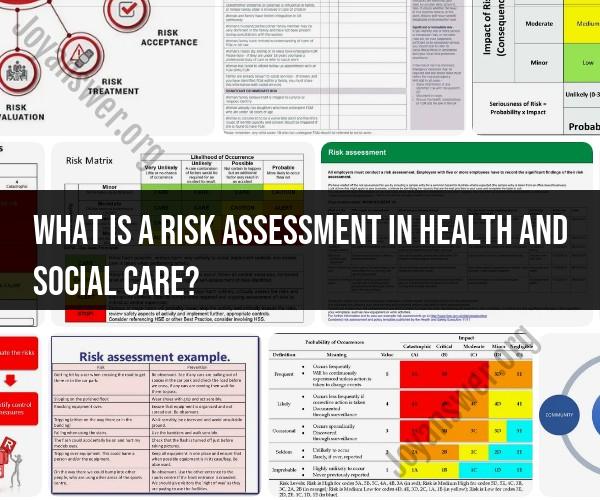What is a risk assessment in health and social care?
A risk assessment in health and social care is a systematic process of evaluating potential risks or hazards that may impact the health, safety, and well-being of individuals receiving care and support in various healthcare and social service settings. The primary goal of a risk assessment is to identify, analyze, and mitigate potential risks to ensure the delivery of safe and effective care. Here are key components and objectives of risk assessments in health and social care:
1. Identification of Hazards and Risks:
- The first step in a risk assessment is to identify potential hazards and risks within the care environment. Hazards can include physical, chemical, biological, ergonomic, psychosocial, and organizational factors that may pose a threat to individuals' health and safety.
2. Risk Assessment Tools and Frameworks:
- Risk assessments often use established tools, frameworks, or guidelines specific to the healthcare or social care sector. These tools help standardize the assessment process and ensure that critical factors are considered.
3. Vulnerable Populations:
- Risk assessments in health and social care take into account the specific needs and vulnerabilities of the individuals being cared for. This includes considering factors such as age, health conditions, disabilities, and cultural backgrounds.
4. Probability and Severity:
- Risks are evaluated based on their probability of occurrence and the severity of their potential consequences. This helps prioritize risks and determine the appropriate level of intervention.
5. Documentation and Record-Keeping:
- Comprehensive documentation of the risk assessment process is essential. This includes recording identified risks, their assessment, and the strategies or interventions planned to mitigate them.
6. Mitigation Strategies:
- Once risks are identified and assessed, the next step is to develop and implement strategies to mitigate or control these risks. This may involve changes to policies, procedures, training, or the physical environment.
7. Regular Review and Update:
- Risk assessments are not static but evolve over time. Regular reviews and updates are necessary to account for changing circumstances, new hazards, or revised best practices.
8. Informed Decision-Making:
- The results of a risk assessment inform decision-making in health and social care settings. Decisions may include changes in care plans, staff training, equipment maintenance, or the allocation of resources.
9. Patient and Staff Involvement:
- In some cases, individuals receiving care and care providers may be involved in the risk assessment process. Their input and insights can help identify risks that may not be apparent to others.
10. Legal and Regulatory Compliance:- Health and social care providers are often required to conduct risk assessments to comply with legal and regulatory standards aimed at ensuring the safety and quality of care.
11. Prevention and Safeguarding:- The ultimate aim of risk assessments is to prevent harm and safeguard the well-being of individuals. By identifying and mitigating risks, health and social care organizations work to create a safer care environment.
Overall, risk assessments in health and social care are an integral part of ensuring the safety, quality, and effectiveness of care delivery. They provide a structured approach to identifying and addressing potential risks, thereby enhancing the overall well-being of individuals receiving care and support.












